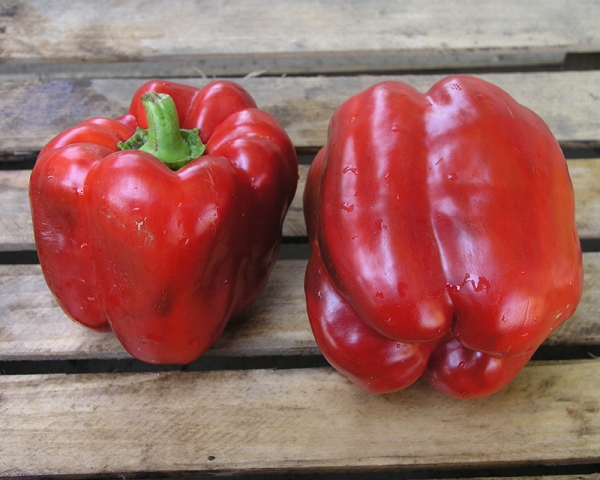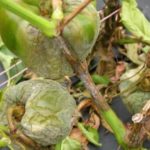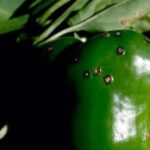Sweet pepper is one of the most beloved and common vegetables. Among the many varieties of peppers, Claudio is of particular interest among gardeners, as it is valued for its qualities of taste and containing in its composition useful substances, vitamins and minerals. A description of this variety can be found in this review.
Table of contents
Biological description and varietal characteristics
Claudio received by the specialists of the company "Nunhems" and is in the group of the Dutch line of vegetable crops. Refers to the early varieties of culture, since the period of ripening from planting seedlings in open soil or in the greenhouse is approximately 80 days.
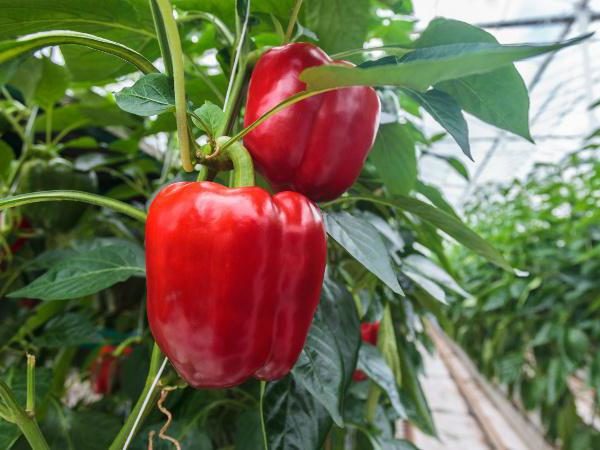
The plant forms a powerful, upright, medium-height bush. Large leaves, painted in bright green color with a slightly wrinkled surface. Due to the large size of leaves, vegetables are protected from the negative effects of the sun.
Cubical shape drooping fruits have a characteristic glossy surface. In the technical ripeness phase, vegetables have a dark green color, and when ripe they acquire a bright red color. The weight of one fruit can be equal 200-250 year With the observance of the agrotechnology of cultivation and favorable climatic conditions, the vegetables are formed by thick-walled ones, their wall thickness is 12-14 mm. Juicy flesh with spicy sweetish taste has the traditional delicate aroma of classic sweet pepper, without pronounced bitterness.
The advantages and disadvantages of the variety
Claudio Pepper has a number of advantages:
- high yield culture;
- excellent taste characteristics and appearance;
- energy seed germination characterizes the simultaneity of their germination and uniform uniform ripening of peppers;
- the possibility of growing, both in open beds, in greenhouse conditions;
- ability to easily adapt to different climatic conditions;
- preservation of presentation during transportation;
- fruit varieties universal purpose consumed fresh and canned.
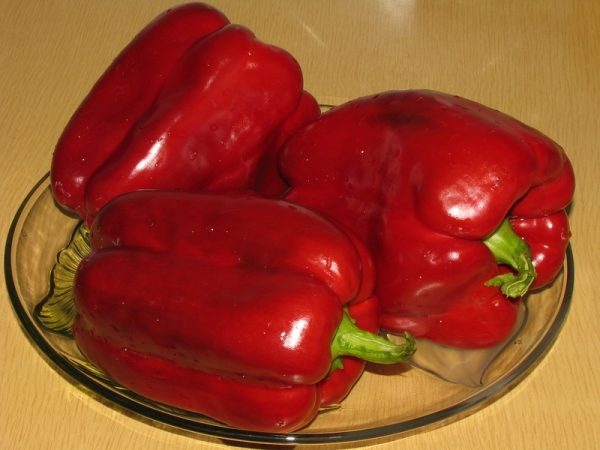
In addition to the weighty advantages of the variety, there are also disadvantages, which include:
- increased demands for soil moisture;
- low rate of transition from technical ripeness of the fetus to its full staining.
Claudio pepper growing technology
It is recommended to take into account some of the nuances before planting this vegetable in your garden. Its cultivation includes certain techniques and is carried out in several stages.
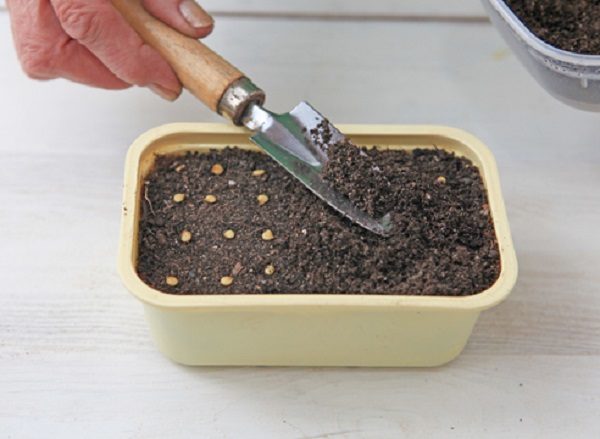
Planting seeds and seedling growing conditions
You need to grow Claudio peppers with seedlings, obtained from seeds, which in the last days of February or early March, sow in prepared containers.
Growing seedlings includes the following operations:
- Before planting seeds need on 5 hours put in waterwhose temperature is not higher than 50C. After the time has elapsed, put them on a cloth moistened with water for three days in a room with a temperature regime not lower than 20 ° C.
- Prepared planting material put in boxes in depth 1-2 cm, keeping the distance between landing units 1.5cm.
- Good pour and cover with glass or a transparent film to maintain the required level of humidity.
- In order for the seeds to germinate well, you need to place the containers in the room, the temperature standard of which must be 24-26 degrees above zero. It is important to bear in mind that seedlings like good lighting, dry air, moist soil and do not withstand drafts, so it is necessary to create optimal conditions, taking into account the preferences of the culture.
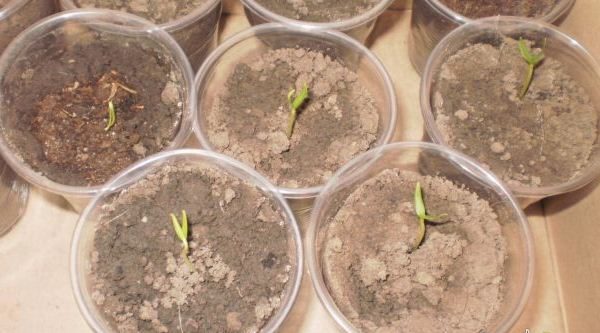
- Later 15 days, the first shoots, and you need to make a pick. This technique contributes to the formation of the roots and strengthens the seedlings, since as they grow they become cramped, and they do not receive the required amount of nutrients. To do this, carefully, without damaging the roots, transplant sprouts into separate forms.
- Put the seedling containers in heat and water with warm water., without over-wetting the ground, in order to avoid the development of such a disease as a black leg. You should also ensure that the soil does not dry out.
- Provide proper seedling care, which consists in spraying plants, airing the room, fencing from drafts. And on the tenth day after the picking, fertilize with urea and superphosphate.
Transplantation in open ground
The site should be open, sunny and windless, and the ground light, nutritious and loose with good aeration. Good forerunners are cabbage, carrots, beets, pumpkin.
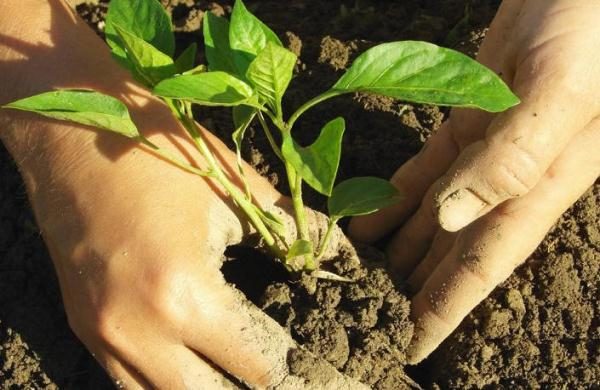
The main stages of planting seedlings in the ground:
- One week before planting seedling is recommended to harden, taking them out daily to the air in sunny, warm weather for a few hours.
- Selected well water the land, loosen the soil and fertilize it, using phosphate and potassium substances.
- In order to maintain the plant from breaking down, it is necessary in the process of planting to install pegs, for which as the bushes grow, they will be tied up.
- Seedlings are good to water, so that they do not experience a lack of moisture in the transplant process.
- Dig holes, observing distance between landing units 40-50 cmand the distance between the rows is 60 cm. The depth of the landing recesses should correspond to the size of the root neck of the seedling and after disembarkation was on a par with the ground. It is important that the bushes are not located close to each other. This may affect plant formation and yield.
- To plant the seedlings together with the earthy ball, deepening into the hole and half filling it with fertile land, it is good to water and fill the hole to the top while leaving the seedbed leaves above the ground,
- After landing grind the bed with pepper peat.
Diseases and pests
Pepper, like all vegetables, is exposed to insects and various diseases. In order not to miss the initial stage and to have time to eliminate the infection of a significant number of plants, it is required to become familiar with the signs of diseases and ways to combat them.
Common diseases that threaten the plant include:
- Blackleg, a disease that can be installed on the dark color of the root of the neck with the presence of grayish plaque. Gradually, the rot affects the root system and causes the death of the plant.
- Late blight considered a serious fungal disease. Leaves, stems and fruits are covered with brown spots with a pale green area near them. In dry weather, the infected areas dry up, and in wet weather they begin to rot.
- Bacterial spotting can cause irreparable damage to the bushes at the stage of formation of seedlings.On the leaves and stems, black spots appear with a yellow edging, and on fruits there are darkish bulging dots with a watery border.
- Late blight
- Bacterial spotting
- Blackleg
To prevent diseases and attacks of pests that lie in wait at different stages of development, you need to work in advance, observing the following rules:
- at the stage of growing seedlings apply only fertilizer;
- process the seeds perform root and foliar fertilizing, which will help the plant to cope with the stresses associated with the violation of the technology of cultivation of culture;
- when watering do not use cold waterand also avoid overmoistening and drying out of the soil;
- at detection of infection of plants to urgently carry out all methods for its elimination, by treating the bushes with protective agents.
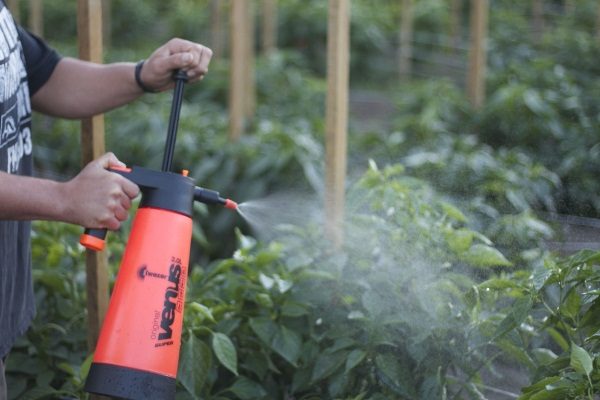
Following these recommendations, nothing will threaten the peppers, and an excellent harvest is ensured.
The complex of measures for the care of pepper
When growing peppers, care is important, which must be done according to the rules. Therefore, the following set of basic works should be carried out:
- conduct regular watering, especially in dry weather, since a lack of water can cause the plant to wither, leading to its death;
- loosen the ground to improve air flow to the roots and the circulation of airborne water vapor in the surface layer, which is favorable for the growth and development of plants;
- weeding, getting rid of weed crops;
- spud pepper bushes during flowering;
- remove the first and large formed flowersthat will help direct nutrients to the formation of the plant itself and the laying of new fruits;
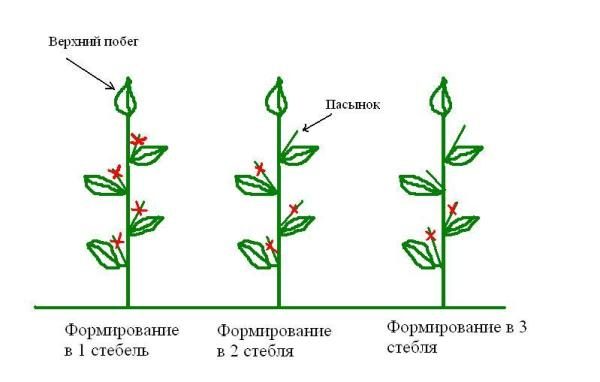
- remove stepchildren and leaves of the lower tiers to ensure the ventilation of the crown and warming it with sunshine;
- tie up the stalks to reliable supports as required;
- for the active development of culture systematically contribute nutrientsusing organic and mineral fertilizers;
- inspect the bushes on the subject of diseases and pests and when they are identified to carry out the necessary measures.
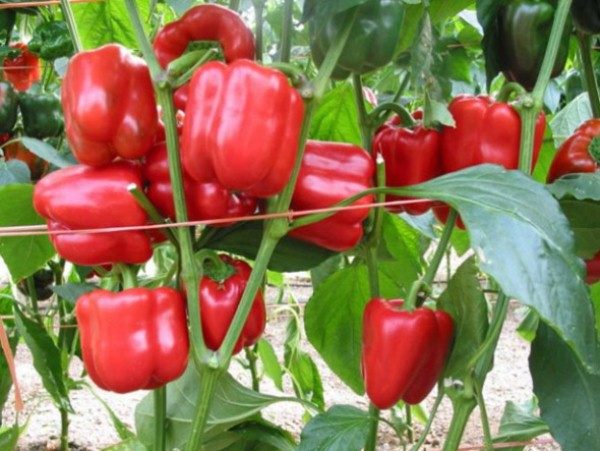
Claudio Pepper - one of the favorite varieties among vegetable growers, because the seeds sprout together quickly and quickly, care does not require much effort and adherence to certain rules will allow you to grow a good crop, distinguishing sweetness and juiciness of fruits.
